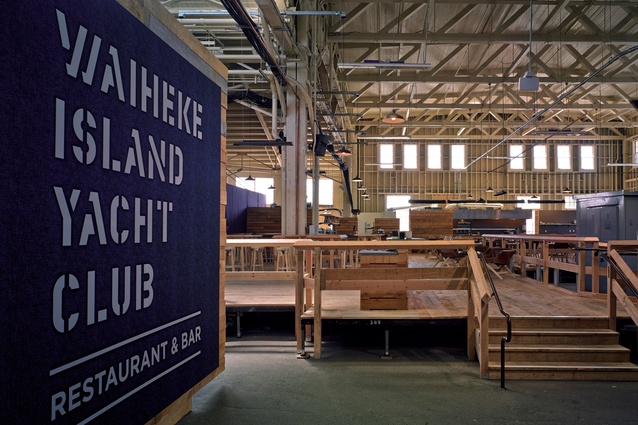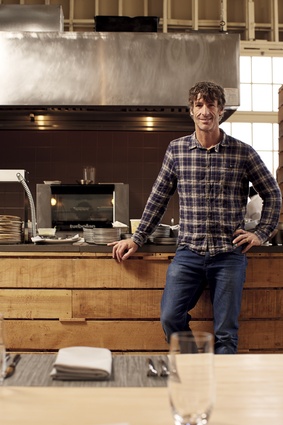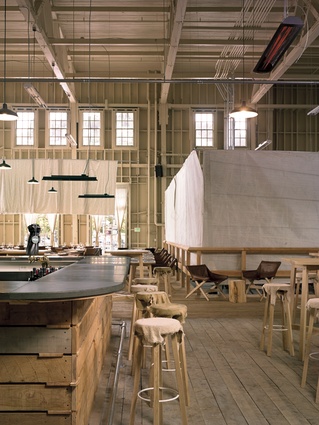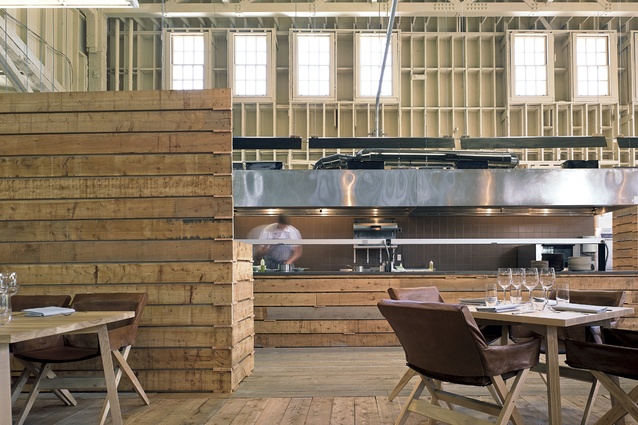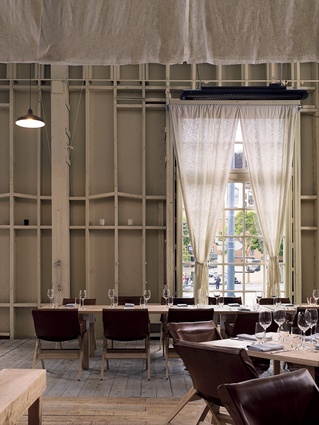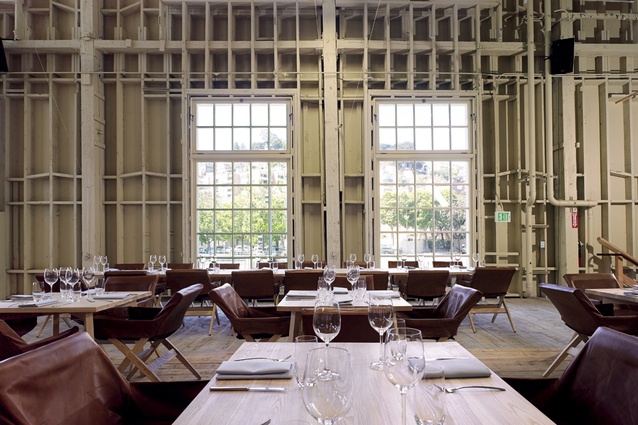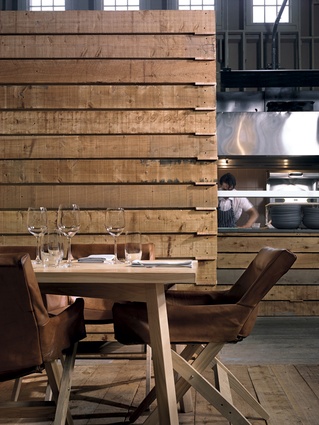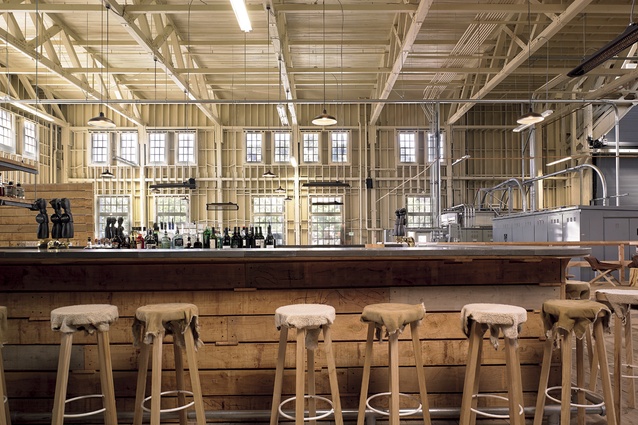Waiheke Island Yacht Club
To find the Waiheke Island Yacht Club (WIYC), which is, confusingly, not on Waiheke Island and, just to muddy the waters a little more, not a yacht club, per se, you’ll need to strike out along The Embarcadero – the long, portside road built on reclaimed land alongside San Francisco’s eastern coastline.
In Spanish, Embarcadero means a place to embark, so it’s an apt place-name for those that recently set sail on this venture slash adventure, a temporary restaurant devised by restaurateur Tony Stewart to coincide with the running of the Louis Vuitton and America’s Cups.
The Embarcadero is dotted with historically significant pier buildings, and it was into Pier 29, a timber structure clad with stucco that was originally built in 1918, that the WIYC was established. “Tony chose well when he chose the restaurant’s position inside Pier 29,” says Jeff Fearon, from Fearon Hay Archiects, who travelled to San Fran to design the venture. The spot Stewart chose is set up by the significant Embarcadero-side windows, which visually anchor the space.
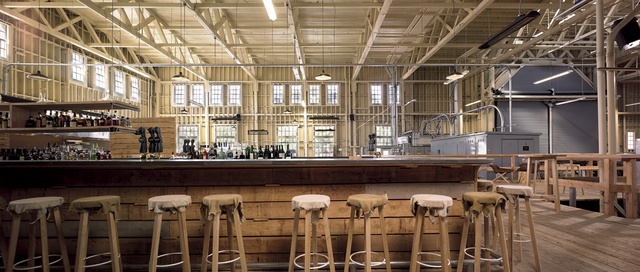
As you might expect, finding a potential venue for a short-term restaurant based around the theme of singularly good New Zealand-themed offerings in a key America’s Cup locale must have been a headache.
Stewart says that in the first instance, after he’d decided that New Zealand should be represented in more ways than just on the water at the America’s Cup, he made a scouting trip to San Francisco to look at possible locations.
“I looked at restaurants that had shut down, I looked at roof tops. I just tried to find real estate that wasn’t going to cost me an arm and a leg – and it didn’t happen. I went to the ports and they suggested I meet the America’s Cup Authority. I eventually got a meeting with the right person and, thankfully, he ran with it right from the get-go.”
The America’s Cup Authority hadn’t in that first instance planned for an onsite restaurant, he says.
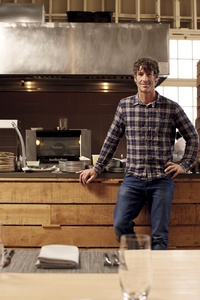
“They didn’t have any vision of a restaurant for the space I’m in and they didn’t really have any plans for any participation of any restaurant – it was all going to be takeaway food. It wasn’t until I put a proposal to them, which was more like a visual storyboard, that I did with Fearon Hay, that they showed interest, and then it gained momentum from that point.”
Tony Stewart and Fearon Hay Architects have history. The much-awarded architecture practice was responsible for the design of the highly regarded Clooney restaurant, which Stewart has operated for a number of years. Both Stewart and Fearon were impressed with the style of this pier structure, although, as Fearon points out, just the very nature and form of a pier building poses challenges. A recent fire also meant that open flames were also prohibited within the structure, which naturally affected the kitchen design, and given its heritage status, any architectural intervention had to be done without touching the sides, so to speak. In the same breath, the impressive scale and the industrial-style grace notes provide clear cues to the designers. The long structure is organised around a gabled entry pavilion with classical notes that are flanked by the flat-roofed wings that are two stories in height. It was into one of these vast spaces, visually distinctive thanks to the repeating vertical rhythm of interior timber framework, that Fearon Hay’s design was placed. The design, says Fearon, delineates horizontal architectural thresholds via an elevated floor constructed from a good part of the 7,000 linear metres of macrocarpa that was sourced from Christchurch. The timber was shipped over in containers and, once in place, Fearon describes the scent of the wood as a sensory event in itself.
The ability to hang lighting and heating objects from the lattice of ceiling timber provided another horizontal threshold, although this one was less constructed and more subliminal. The timber platform also had to navigate some irregular objects; two large grey electrical substations for instance, abut the floor, and are now shielded by suspended drapes. Furniture for the space was commissioned from Douglas & Bec, and the refined joinery of these pieces provides a nice counterpoint to the rough sawn timber. The bar and servery, the key organisational spaces, were fitted with a long granite bars that were manufactured by Terrazzo & Stone in Auckland. There’s fineness to the furniture and a fineness in the food.
Stewart says that he understood the possibilities straight away. “The space is incredible; it’s about eight metres high and it’s about textures, all about layers, which was exactly what we wanted.”
The week that I speak with Stewart, actor Tom Cruise pops by for lunch. A Facebook post that documented that event garnered 33,000 likes. That was a highlight, says Stewart, but there have also been challenges – labour, for one thing.
“We were dealing with the unions and the union wage over here is just phenomenal. That was one thing we didn’t anticipate. There is a different mentally about getting things done here. In New Zealand we’ll just bang it out and move on to the next job,” he says. “But I was amazed at how receptive and helpful the ports were, it was amazing to deal with, and even the local government was really good. It seemed that people wanted us to be part of the event and to showcase New Zealand.
“It’s a very exciting environment. These people are very food focused, they’re very on to it, and sustainability is a very important part of their train of thought. It’s a really cool place to drop into for a short period of time.”


